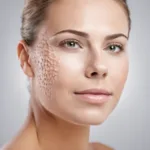11 January 2024
Discover the Benefits, Cost, and Risks of Microneedling
In the quest for youthful and radiant skin, individuals are constantly seeking innovative cosmetic procedures. One such procedure that has gained significant popularity in recent years is microneedling. This minimally invasive treatment utilizes tiny, sterilized needles to stimulate collagen production and improve the appearance of various skin concerns, including scars, acne, and wrinkles. In this article, we will delve into the world of microneedling, exploring its benefits, cost, risks, and effectiveness, as well as comparing it to at-home rollers.
The Benefits of Microneedling
Microneedling has emerged as a go-to treatment for a wide range of skin concerns. By creating micro-punctures in the skin, this procedure triggers the skin’s healing process, leading to the production of new collagen and the improvement of skin texture and tone. The American Academy of Dermatology Association (AAD) notes that microneedling can effectively reduce the appearance of scars, dark spots, and wrinkles, while enhancing skin elasticity. Additionally, a recent review suggests that microneedling may even promote hair growth in individuals with alopecia.
Targeted Areas for Microneedling
While microneedling is most commonly performed on the face, dermatologists may also use it to address scarring and stretch marks on other parts of the body. Research has shown promising results for the treatment of stretch marks on the thighs and abdominal area when combined with fillers. This versatility makes microneedling a versatile option for individuals seeking to improve the appearance of various skin concerns.
The Cost of Microneedling
The cost of microneedling can vary depending on the treatment needed and the professional performing the procedure. Estimates by Dermapen suggest that each session may range from $200 to $800, with lighter sessions potentially costing as little as $150. Since microneedling is considered a cosmetic procedure, it is typically not covered by insurance. However, some clinics may offer financing or payment plans to make the treatment more affordable. It’s important to note that multiple sessions and long-term maintenance plans may be required to achieve optimal results.
How Microneedling Works
Microneedling works by creating small pricks in the skin, which prompt the skin to produce new collagen-rich tissue. This new tissue is more even in tone and texture, leading to firmer and rejuvenated skin. Dermatologists may combine microneedling with other treatments, such as topical serums, radiofrequency, or platelet-rich plasma, to enhance its effectiveness. A dermatologist can provide further guidance on additional treatment options and their associated costs.
Risks and Side Effects
While microneedling is generally considered safe, it does carry some risks. Common side effects include minor skin irritation and redness immediately after the procedure, which typically subside within a few days. However, severe side effects such as bleeding, bruising, infection, or peeling may occur in rare cases and require medical treatment. Certain individuals may not be suitable candidates for microneedling, including those with certain skin conditions, open wounds, active acne, recent radiation therapy, or a history of skin scars. Pregnant individuals may need clearance from their obstetrician or gynecologist before undergoing the procedure.
Preparing for Microneedling and the Procedure Itself
Before undergoing microneedling, it is important to follow pre-procedure instructions provided by your dermatologist. This may include stopping certain medications and avoiding agents that may increase skin sensitivity. During the procedure, a topical anesthetic is typically applied to the treatment area to numb the skin. The doctor then uses a pen-like tool with tiny, sterilized needles to create small pricks under the skin. The procedure usually lasts around 30 minutes, and the doctor may finish by applying a growth serum or calming treatment.
Post-Treatment and Optimal Skin Care
After microneedling, most individuals experience minimal downtime, if any. Skin irritation and redness may occur in the first few days, but this is a natural response to the procedure. It is advisable to let your skin heal before applying makeup and to protect it from sun exposure by applying sunscreen. Dermatologists typically recommend waiting one week before exposing the skin to sunlight or harsh chemicals. Results from microneedling can be seen within a couple of weeks, but multiple sessions or complementary treatments may be necessary for long-term maintenance.
Microneedling vs. Home Rollers
While at-home derma rollers may seem like a more affordable and convenient option, they are not as effective as professional microneedling. Home rollers do not penetrate the skin to the same depth as professional microneedling, which may limit their results. Professional microneedling, on the other hand, induces skin rejuvenation and offers more significant and long-lasting results. However, home rollers can still be used for less invasive and temporary results.
Conclusion: Microneedling has emerged as a promising cosmetic procedure for individuals seeking to improve the appearance of scars, acne, wrinkles, and other skin concerns. With its ability to stimulate collagen production and rejuvenate the skin, microneedling offers a safe and effective option for skin rejuvenation. While it may come at a cost, the potential benefits and long-term results make microneedling a worthwhile investment for those seeking to achieve youthful and radiant skin.



